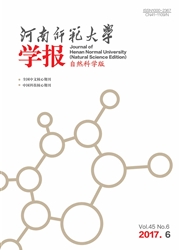

 中文摘要:
中文摘要:
尽管 HIV-1 子类型 B 仍然在发达国家统治流行爱滋病,在开发国家的越来越多的人正在受不了非子类型 B 病毒的流行病。什么是更坏的, antiretroviral 药的 combinational 使用的功效被药抵抗的快速的发展逐渐地损害。获得卓见进药抵抗, 10-ns MD 模拟同时与 4 不同朊酶( B wt , B 傻瓜, F wt 和 F 傻瓜)在 TL-3 禁止者的建筑群上被进行,在哪个之中有 TL-3 禁止者的 B wt 朊酶的建筑群被当作控制组。 MD 数据的详细分析显示对 TL-3 的 B 傻瓜的药抵抗主要源于一张重要的氢契约的损失并且 F , wt 被恐水病的相互作用的减少在 S1/S1 引起衣袋,当两上面提及的二个原因是 F 傻瓜朊酶抵抗的原因时。这些结果在对以前的实验的好同意,揭示为对 TL-3 禁止者的上述的朊酶子类型的药抵抗的可能的机制。另外,另一个指示被获得 M36I, V82A 和 L90M 的变化可以导致结构的变换以便改变禁止者绑定模式。
 英文摘要:
英文摘要:
Although HIV-1 subtype B still dominates the epidemic AIDS in developed countries, an increasing number of people in devel- oping countries are suffering from an epidemic of non-subtype B viruses. What is worse, the efficacy of the combinational use of antiretroviral drugs is gradually compromised by the rapid development of drug resistance. To gain an insight into drug resistance, 10-ns MD simulations were simultaneously conducted on the complexes of the TL-3 inhibitor with 4 different proteases (Bwt, Bmut, Fwt and Fmut), among which the complex of the Bwt protease with the TL-3 inhibitor was treated as the control group. Detailed analyses of MD data indicated that the drug resistance of Bmut against TL-3 mainly derived from loss of an important hydrogen bond and that of Fwt was caused by the decrease of hydrophobic interactions in S 1/S 1' pocket, while both of the two reasons mentioned above were the cause of the Fmut protease's resistance. These results are in good agreement with the previous experiments, revealing a possible mechanism of drug resistance for the aforementioned protease subtypes against the TL-3 inhibitor. Additionally, another indication was obtained that the mutations of M36I, V82A and L90M may induce structural transforms so as to alter the inhibitor's binding mode.
 同期刊论文项目
同期刊论文项目
 同项目期刊论文
同项目期刊论文
 Structural Basis of Agonist Selectivity for Different nAChR Subtypes: Insights from Crystal Structur
Structural Basis of Agonist Selectivity for Different nAChR Subtypes: Insights from Crystal Structur Different Interaction between the Agonist JN403 and the Competitive Antagonist Methyllycaconitine wi
Different Interaction between the Agonist JN403 and the Competitive Antagonist Methyllycaconitine wi Possible Drug Candidates for Alzheimer';s Disease Deduced from Studying their Binding Interactions w
Possible Drug Candidates for Alzheimer';s Disease Deduced from Studying their Binding Interactions w 期刊信息
期刊信息
